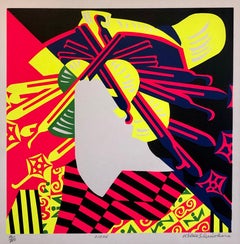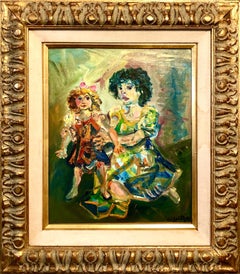Lions Gallery Art
1960s Abstract Expressionist Abstract Drawings and Watercolors
Ink
1960s Pop Art Abstract Prints
Screen
1960s Pop Art Abstract Prints
Screen
1960s Pop Art Abstract Prints
Screen
1960s American Modern Mixed Media
Fabric, Textile, Canvas, Paint
1960s Expressionist Figurative Paintings
Canvas, Oil
1960s Modern Figurative Sculptures
Bronze
1960s Abstract Expressionist Landscape Paintings
Mixed Media, Tempera
1960s Modern Mixed Media
Paper, Mixed Media
1960s Modern Mixed Media
Paper, Mixed Media
1960s Expressionist Abstract Sculptures
Bronze
1960s American Modern Figurative Paintings
Paint, Paper
1960s Abstract Expressionist Abstract Paintings
Jute, Oil, Canvas
1960s Surrealist Figurative Paintings
Canvas, Oil
1960s American Modern Prints and Multiples
Lithograph
1960s American Modern Prints and Multiples
Lithograph
1960s Abstract Prints
Ink, Black and White, Lithograph
1960s Abstract Prints
Lithograph, Ink, Black and White
1960s Abstract Prints
Black and White, Lithograph, Ink
1960s Abstract Prints
Ink, Black and White, Lithograph
1960s Abstract Prints
Ink, Black and White, Lithograph
1960s Abstract Prints
Ink, Black and White, Lithograph
1960s Abstract Prints
Black and White, Lithograph, Ink
1960s Abstract Prints
Black and White, Lithograph, Ink
1960s Abstract Prints
Paper, Ink, Lithograph
1960s Surrealist Abstract Sculptures
Metal
1960s Modern Figurative Prints
Lithograph
1960s Abstract Expressionist Abstract Paintings
Canvas, Oil
1960s Surrealist Figurative Paintings
Oil, Panel
1960s Surrealist Landscape Prints
Lithograph
1960s Cubist Abstract Sculptures
Travertine, Bronze
1960s American Modern Black and White Photography
Silver Gelatin
1960s American Modern Black and White Photography
Silver Gelatin
1960s American Modern Black and White Photography
Silver Gelatin
1960s Modern Figurative Drawings and Watercolors
Pen, Watercolor
1960s Modern Animal Drawings and Watercolors
Pen
1960s Modern Figurative Drawings and Watercolors
Pen
1960s Modern Figurative Drawings and Watercolors
Pen, Paper, Ink
1960s Modern Portrait Photography
Silver Gelatin
1960s American Modern Black and White Photography
Silver Gelatin
1960s American Modern Black and White Photography
Silver Gelatin
1960s American Modern Black and White Photography
Silver Gelatin
1960s American Modern Black and White Photography
Silver Gelatin
1960s American Modern Black and White Photography
Silver Gelatin
1960s American Modern Black and White Photography
Silver Gelatin
1960s American Modern Black and White Photography
Silver Gelatin
1960s American Modern Black and White Photography
Silver Gelatin
1960s American Modern Black and White Photography
Photographic Paper
1960s American Modern Black and White Photography
Photographic Paper
1960s Modern Color Photography
Photographic Paper, C Print, Color
1960s Modern Color Photography
Photographic Paper, C Print, Color
1960s Abstract Prints
Etching, Aquatint, Intaglio
1960s American Realist Black and White Photography
Photographic Paper
1960s American Realist Black and White Photography
Photographic Paper
1960s American Realist Black and White Photography
Photographic Paper
1960s Modern Abstract Sculptures
Gold, Bronze
1960s Modern Abstract Sculptures
Gold, Bronze
1960s Modern Abstract Sculptures
Gold, Bronze
1960s Surrealist Abstract Sculptures
Gold, Bronze
1960s Surrealist Abstract Sculptures
Gold, Bronze





